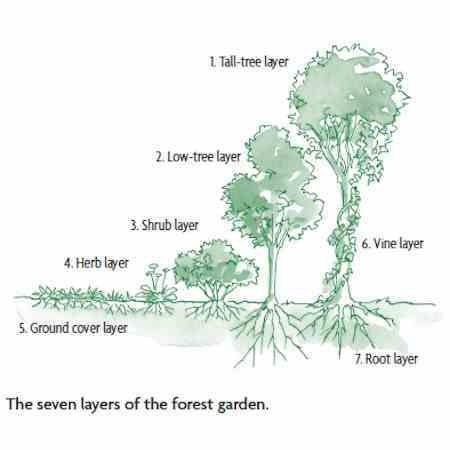Creating a Food Forest
- Sarah Valentine Design

- Aug 20, 2020
- 2 min read
When I was travelling 'around the world' during my 20s, I spent a lot of time in libraries (being the proud book nerd I am) and during my browsing, found a tome of sustainable gardening, called Permaculture: A Designers' Manual by Bill Mollison. It's a hefty 550+ page masterpiece in consciously-designed sustainable agriculture, detailing everything you need to know about about living on your land, sustainably, and it kinda blew my mind.
On par with one of my university Botany textbook in terms of scientific detail and phytology, I devoured the resource as a way to plan for the future, thinking that every farmer, gardener and backyard enthusiast should own a copy. A strong take-away from the manual was Mollison's chapters on creating a Food Forest, a low-maintenance garden that mimics forest growth patterns while promoting greater biodiversity.
The idea is that one could go into any untouched forest, especially in high production areas like the tropics, and you will see plants flourishing, all without the assistance of humans. So why not grow food in a similar way in our own backyards?
The basic concept is planting different layers of plants:
Canopy: This layer is primarily for large nut or fruit trees, such as plums, apples, cherries, walnuts and chestnuts that require full sun throughout the day and which mature to a height of 50 feet or more.

Understory Trees: This layer is for dwarf fruit trees and smaller nut trees, like hazelnuts, which do not require full sun and are more shade tolerant, such as black mulberries and crab apples.
Vines: In temperate areas, good edible vines include hardy kiwis, grapes and scarlet runner beans as well as hops and honeysuckle. These high-producing plants are often forgotten, but are a wonderful addition to gardens for the ability to grow vertically, extending your garden area significantly.
Shrubs: Under the tree layers, comes the shrub layer, and the choices are almost endless. Many fruiting shrubs thrive in partial shade, matching their natural ecosystems, such as the temperate favourites like red and black currants, raspberries, blueberries, serviceberries, huckleberries and elderberries, as well as less known options like sea berry and goji, renowned for being 'superfoods'.

Herbaceous plants: Following the shrub layer are the perennial vegetables and herbs, such as common culinary options like lemon balm, thyme, lavender, mints, oregano and sage as well as your artichokes, rhubarb and asparagus.
Groundcovers: Although a thickly planted food forest will provide plenty of shade, it is important to try to keep weeds away and moisture in with groundcovers. These are, again perennials to keep it as low-maintenance as possible, plants that spread horizontally. Tasty examples include alpine strawberries, nasturtiums, watercress, wild ginger, sorrel and chamomile.

Rhizosphere: This important layer refers to root crops, even if the above-ground portion might be a vine, shrub or herb. Obvious ones include carrots, radishes, garlic, onions, beets and potatoes, but also include chicory, arrowroot and horseradish.





Comments